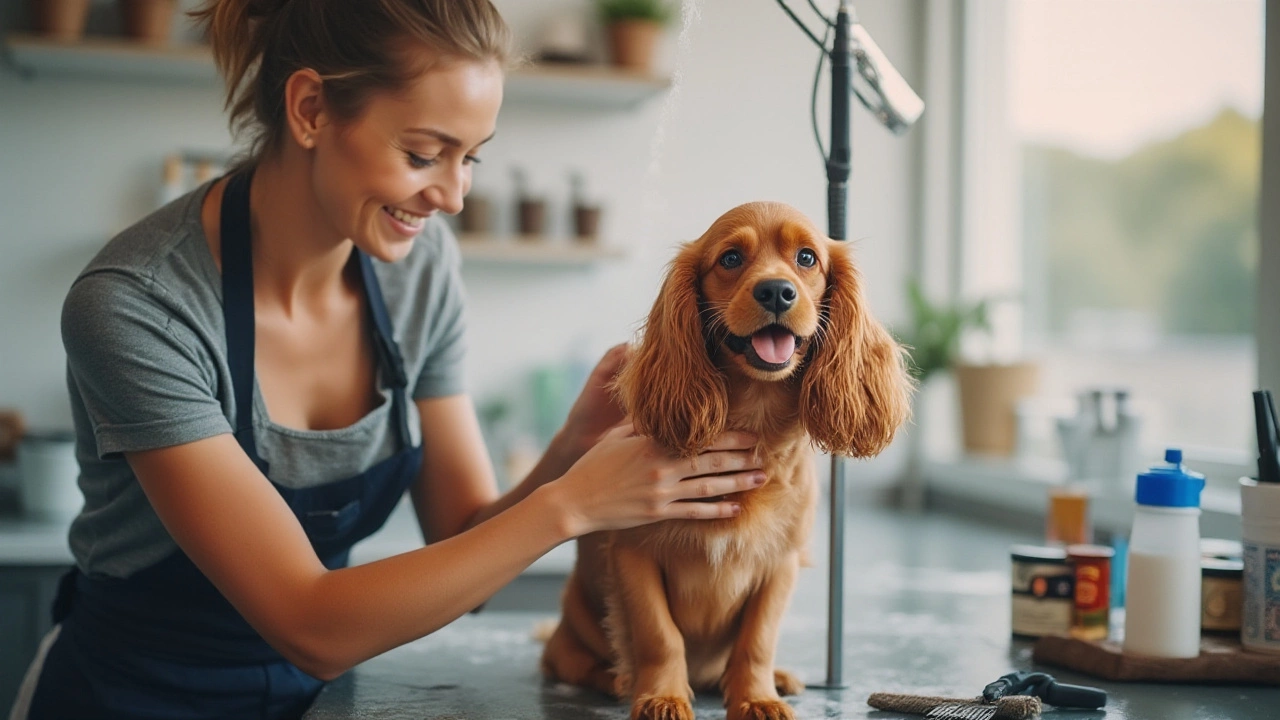Wash or Cut: Simple Guidance for Grooming Your Dog
Whether you’re prepping for a show or just want your pooch to smell fresh, the big question is: should you wash, cut, or do both? The answer isn’t one‑size‑fits‑all – it depends on breed, activity level, and the condition of the coat. In this guide we break down the basics so you can decide what your dog needs today, not tomorrow.
When to Bathe Your Dog
Most owners think a weekly bath keeps any dog clean, but that can strip natural oils and cause skin irritation. A good rule of thumb is to bathe only when the coat is actually dirty, smells, or after a muddy walk. If your dog loves swimming, a rinse after each swim is enough – a full shampoo can wait.
Use a dog‑specific shampoo that matches the coat type. For short‑haired breeds, a gentle, hypo‑allergenic formula works well. Long‑haired or double‑coated breeds benefit from a conditioning rinse to keep the undercoat tangle‑free. The Should You Bathe Your Dog Before Grooming? article recommends a quick rinse before a professional cut; a clean coat makes scissors glide smoother and reduces the chance of pulling.
Check the skin for hot spots or ticks before you lather up. If you spot irritation, skip the shampoo and call your vet – an inflamed skin patch can get worse with water.
Choosing the Right Cut
Not every dog needs a full shave. A trim that follows the breed’s standard keeps the coat functional and looks tidy. For working gundogs, a shorter back and longer forequarters help them move through brush without overheating. For a family pet who spends most time at home, a “puppy cut” – keeping hair at about an inch – makes brushing easier and reduces shedding.
If you’re unsure, start with a simple trim: clip the leg hair to a uniform length, tidy up the ears, and trim the tail if it gets tangled. The Should You Take Your Dog’s Collar Off at Home? guide reminds us that a collar can snag a fresh cut, so remove it before the groomer starts.
Invest in a good pair of clippers with adjustable blades. A low‑noise model keeps anxious dogs calmer, and the ability to switch lengths means you can fine‑tune the look without multiple tools.
Lastly, schedule regular grooming appointments. Even if you handle the weekly brush, a professional cut every 6‑8 weeks keeps the coat healthy and catches skin issues early. Combine a bath when the coat feels greasy with a cut when the hair reaches the recommended length – that’s the sweet spot for most dogs.
Remember, grooming isn’t just about looks. A clean, well‑cut coat protects against parasites, regulates temperature, and reduces matting that can lead to painful skin infections. Use these simple checks – dirt level, scent, coat condition, and breed standards – to decide whether today is a wash day, a cut day, or both.
- Morgan Ainsworth
- 0 Comments
Do Groomers Cut or Wash Dogs First? Understanding the Process
Dog grooming is an essential part of pet care, but many owners wonder whether groomers wash or cut first. This article delves into the groomer's process, explaining the rationale behind the order of washing and cutting. It provides pet owners with insightful information on how these services ensure the best results and what steps are typically taken for different dog breeds. Additionally, you’ll find useful tips to ensure a stress-free grooming experience for your furry friend.
View More
